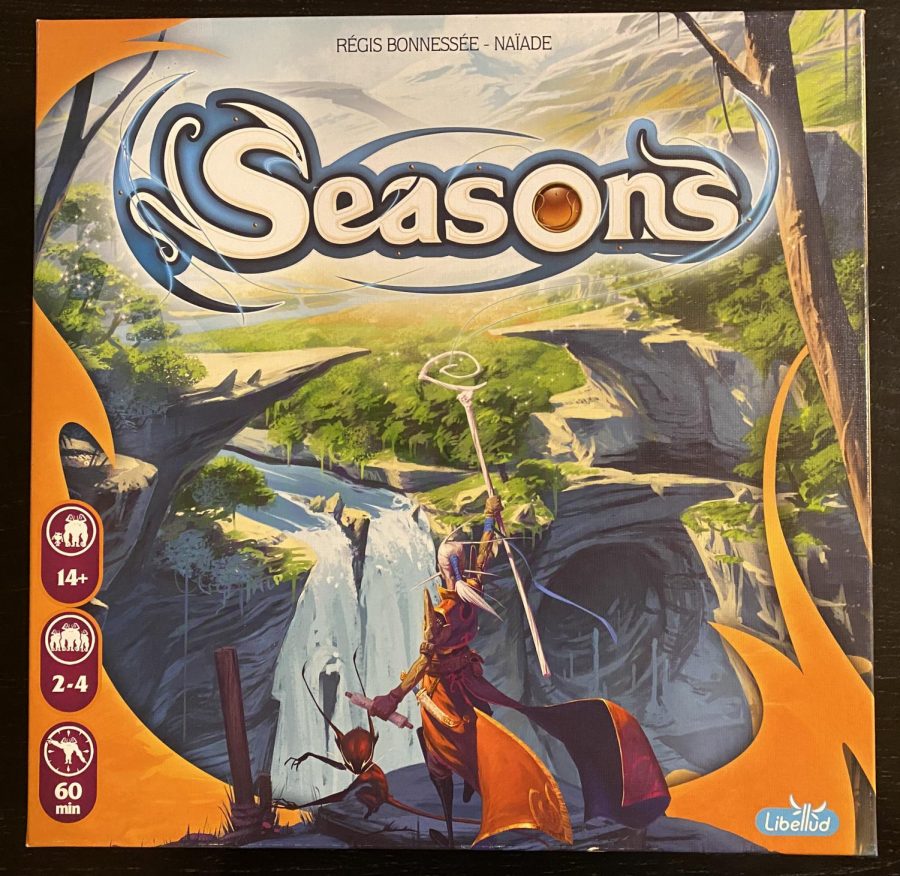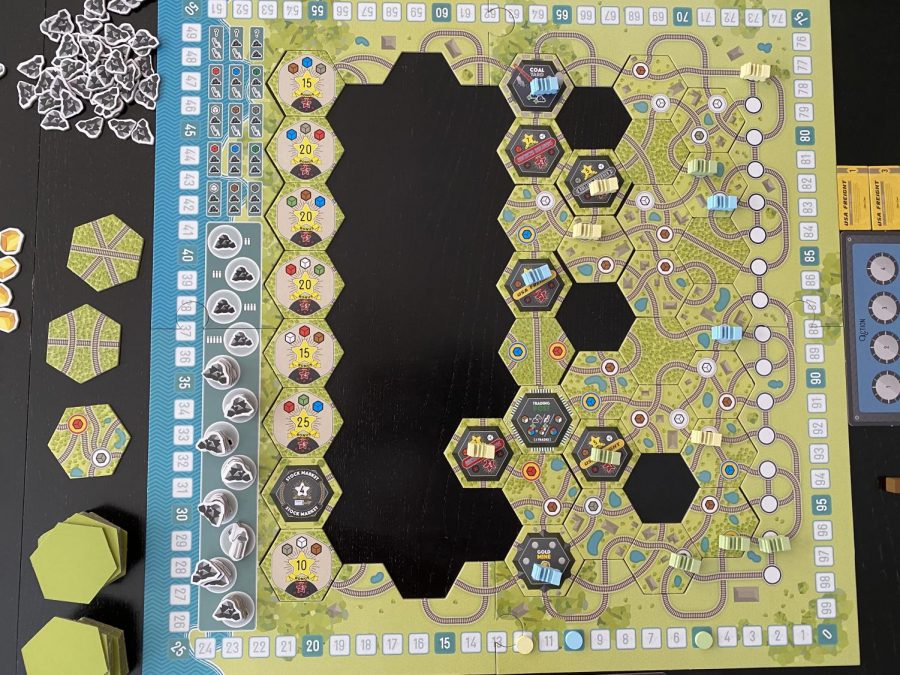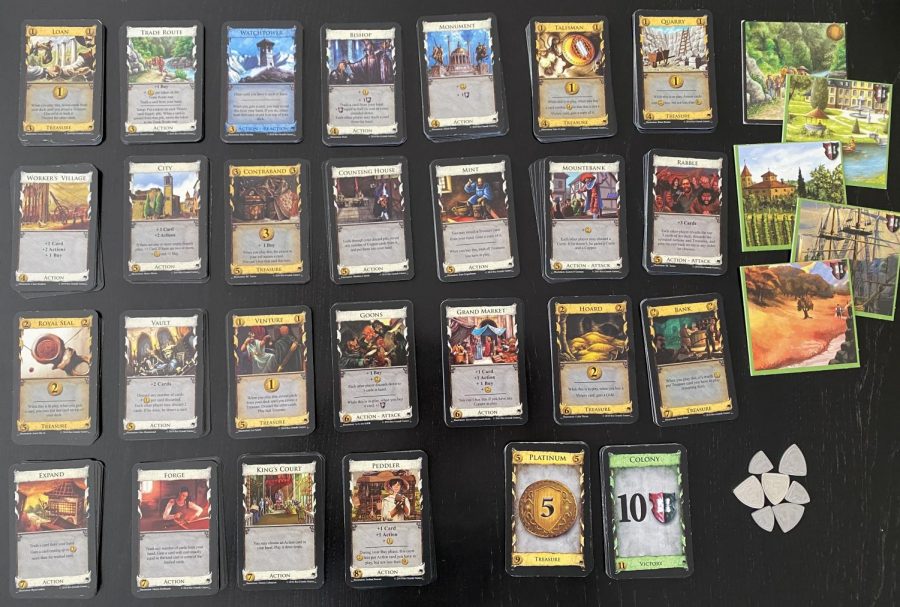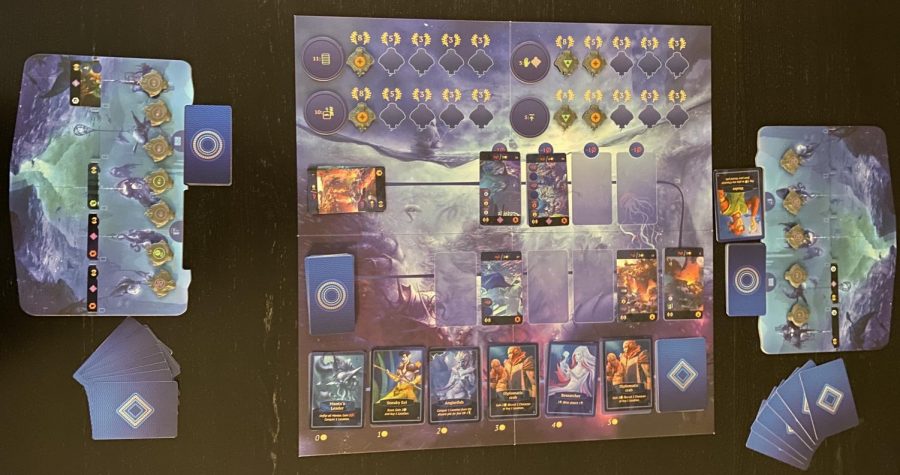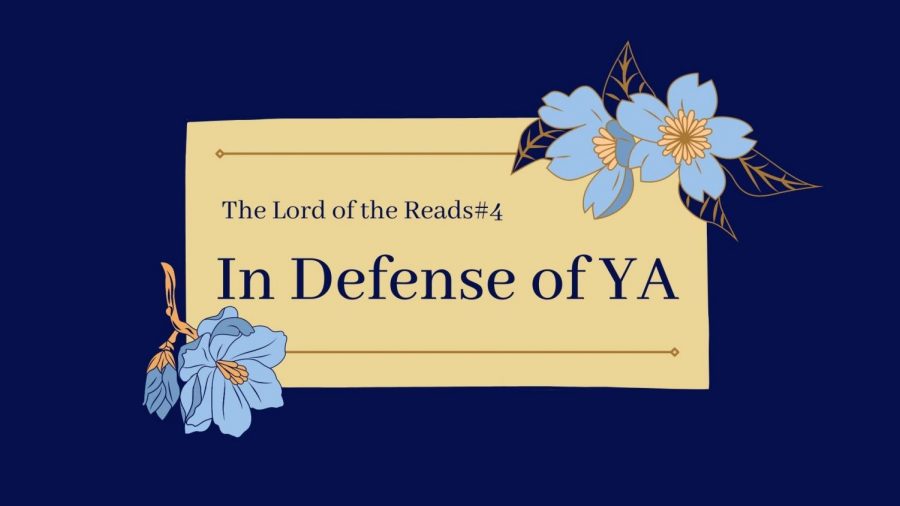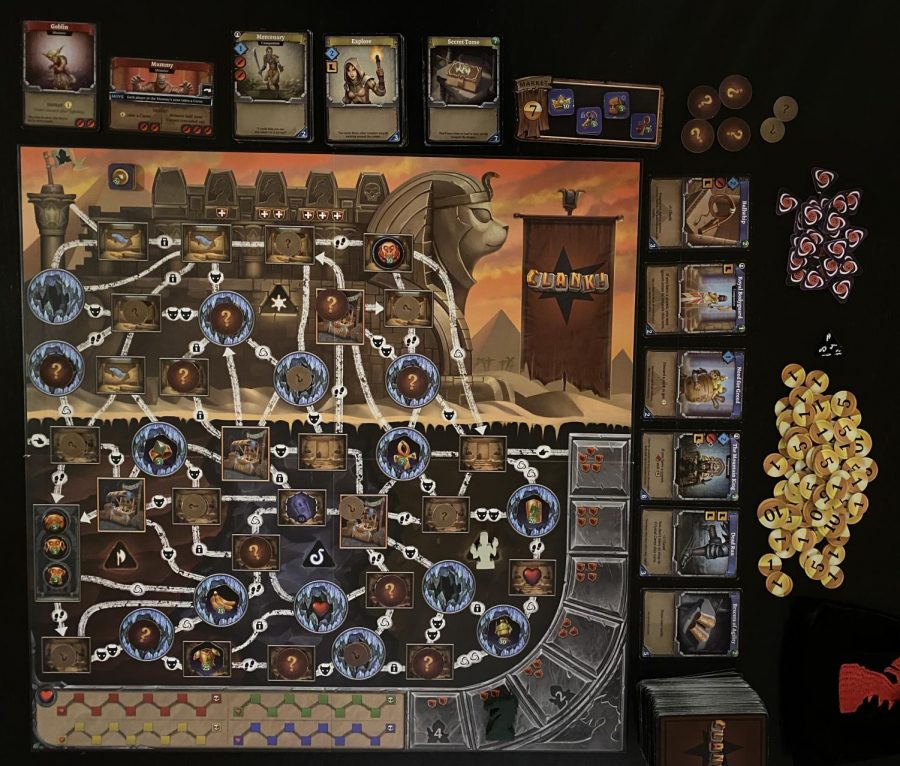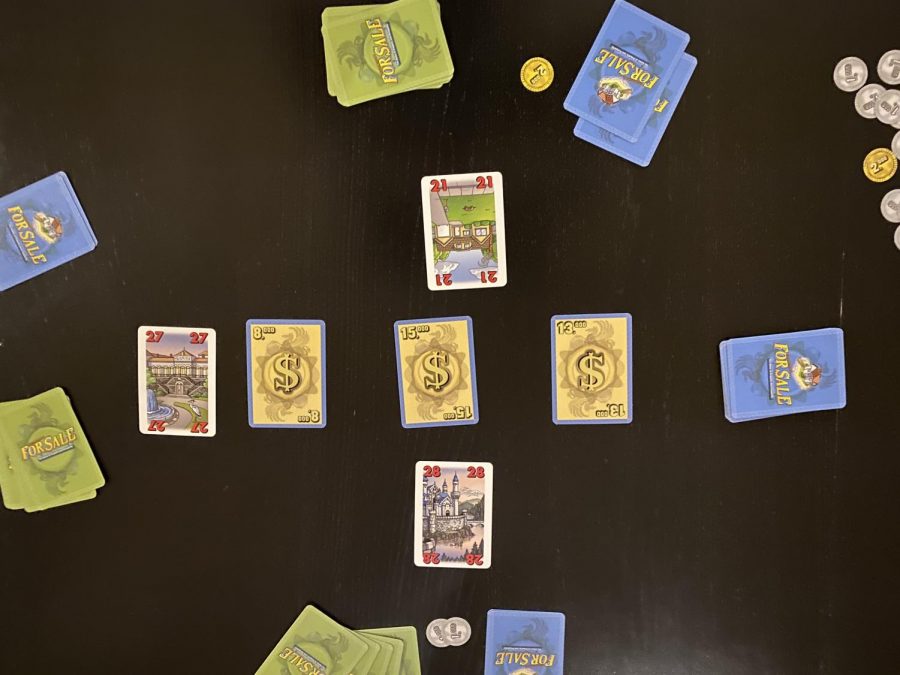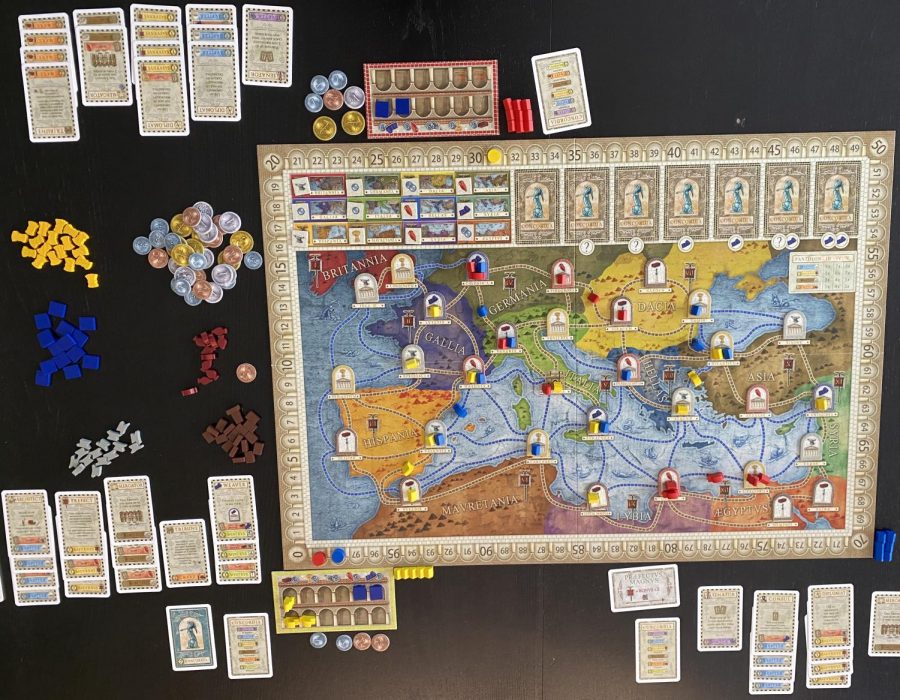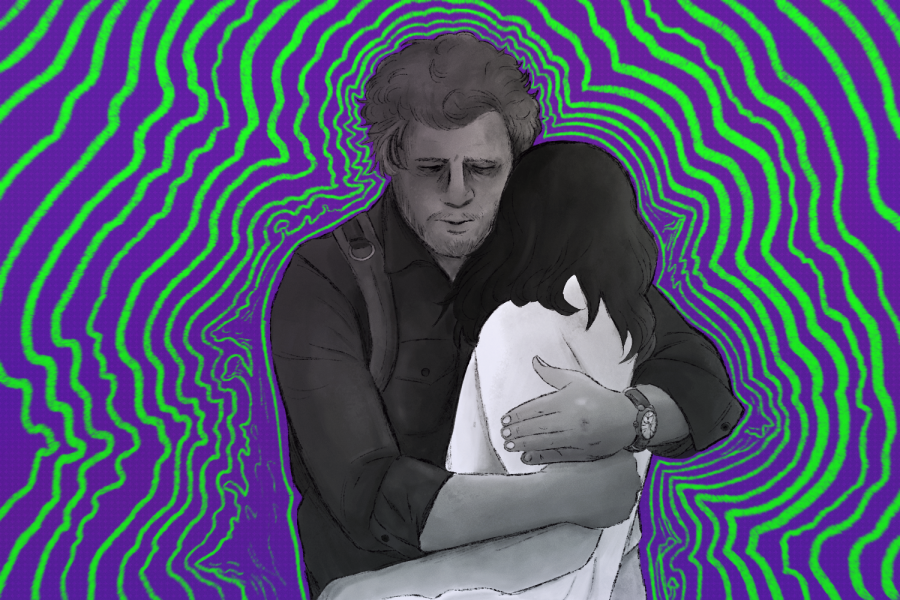This week, we’ll take a look at a fantasy-themed game about getting magical items and familiars using the four basic elements: water, earth, fire, and air. The core mechanism of this game is drafting, where one player selects a card or die and passes the rest of them for the next players to select. There are also lots of tactics, resource management, and card combos.
Seasons is a two-to-four player game designed by Regis Bonnesse and published by Libellud. It definitely has some complexity; let me show you how it plays, and then I’ll tell you what I think of it.
How to Play
The game is divided into two phases: a prelude phase, which happens before the first year, and a tournament phase, which happens over the course of three years. While the prelude phase is quite short compared to the rest of the game, it’s just as strategically important; it sets up the moves you will make in the tournament phase.
During the prelude phase, each player gets nine power cards. They’ll look through those power cards, choose one to keep, and pass the rest to the player on their left. Then, they will get the eight power cards the player on their right passed to them. Just like before, they’ll look through the cards, choose one to keep, and pass the rest to the next player. Players will do this until they are given one card to keep. Now that all players have nine power cards, they must choose three cards to start the game with, three cards they will get at the start of year two, and three cards they will get at the start of year three. They’ll mark these by putting three cards in their hand and three cards under each of their library tokens.
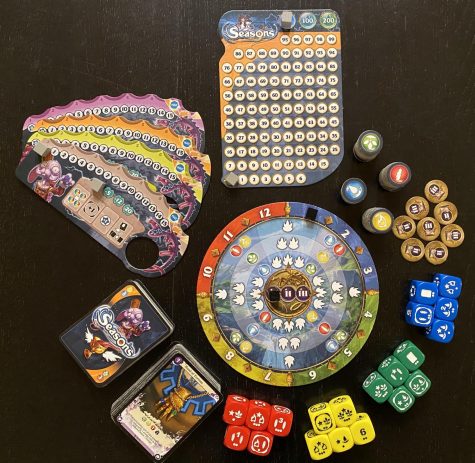

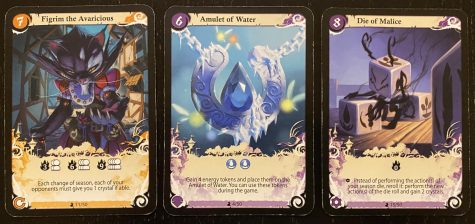
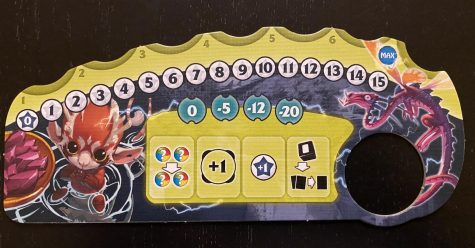
That wraps up the prelude phase; the tournament can now begin. The tournament happens during game rounds, and the season marker will progress at the round’s conclusion. For an overview of each game round, the first player rolls season dice, each player picks one of the rolled dice, and then players will take their turn by executing the actions on their season die and summoning power cards from their hand.
The start player rotates each game round, and they roll a number of dice equal to the player count plus one. Starting with the player who rolled the dice, players select one remaining die to use for their turn and pass the rest of the dice to the next player to pick from. There will be one die remaining after all players choose, but it plays a key role at the end of the round.
Beginning with the start player, everyone takes their turn. They first perform the actions of their season die. All the abilities of the season dice are shown in the picture on the left.
Next players, can summon and activate power cards. Players can summon a power card if they meet two requirements. First, their summoning gauge must be higher than the number of power cards they have in play. Second, they must pay the card’s summoning cost. Cards can cost energy tokens, crystals, or a combination of both. Some power cards list different costs next to people icons, which means that the cost changes based on how many players there are.
The picture on the left shows the format of power cards. The bottom left corner tells you what kind of abilities the power card has. A diamond-looking icon means the card has an ability when it enters play. A gear icon means the card has an ability that you can activate once per round. You can activate the card to use its ability by turning the card 90 degrees. You will straighten the card to its original orientation at the end of each round. The final icon that a card could have is a circular arrow, which means the power card has a permanent ability while it is in play.
When things don’t go your way, you can use a power-up to help get back on track. Each player is allowed to use three power-ups during the entire game. They could use them all during the same round or different rounds. There are four types of power-ups, explained in the picture of the player boards, and players can use the same or different ones each time they choose to use one. However, using a power-up costs you points at the end of the game.
After all players take their turns, look at the die that no player drafted. The number of dots on the bottom of that dice face determines how many spaces the season marker moves. When the season marker enters a new color zone, the season changes. Players will roll different colored season dice, which provide the energy tokens most prevalent during that season. The crystal rewards for transmutation also change each season.
When the season marker crosses over from the last space to the first space, the year changes. Players can then pick up the three cards under their year two or year three library token. Players keep any cards they had from the previous year too. When the year changes from three to four, the game ends. Players get points from their current number of crystals and power cards in play. They also lose points for using power-ups and lose five points for each power card left in their hand.
Final Thoughts
There are three difficulty levels to play Seasons. The easiest one is the Apprentice level, in which players are given a predetermined set of nine power cards, and they choose which three to get each year. The next level is the Magician level, where players draft their initial power cards and then choose which ones they want each year. The most advanced level is the Archmage level, which is exactly like the Magician level but with 20 additional unique power cards that are more complex than the 30 differently-named cards used in the Magician level.
The reason I open with this is that I love to play Seasons at the Magician or Archmage levels where everyone is picking and passing the cards to form their hand. I recommend playing the Apprentice level whenever you have a new player because players cannot make an educated decision on which cards to draft until they understand how the game works. Furthermore, the power card sets for the Apprentice level showcase many combinations in the game, which help players know what to draft in future games. However, once you finish a game at the Apprentice level once, you should play at the Magician level because that’s where the real game is at.
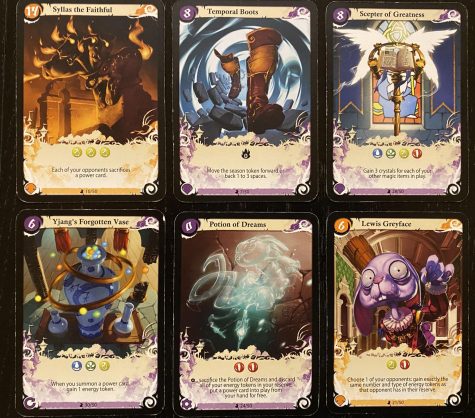
It’s so much fun to draft the cards and watch them go around the table. You want many of the power cards, but you have to consider what cards your opponents will take first. Also, other players do not know what card you take first, so you could use that to pick a card that you will use later to surprise your opponents. As a playing group drafts cards, players have to pick cards that work well together but also must keep in mind they are picking three cards for each year. Once your group understands most of the cards from the Magician level, adding the additional complex cards only increases the amount of fun by adding more potential combinations.
The only problem I have with the drafting is in the two-player game. I don’t like that both players will know most of the cards in the opponent’s hand, so I prefer playing with three or four players. At the higher player counts, I know what cards are in the game and what to watch out for, but I don’t know which opponent picked what cards. The other concern is that players need to be aware of how important the drafting is; it is half of the decisions you make, but it takes significantly less than half of the game’s total length.
Speaking of game length, the rest of the game is quite long. The box lies when it says 60 minutes, and I expect games to last around 90 minutes instead. If you are playing with someone who has analysis paralysis, they can make simple turns take long. Other than the substantial downtime between turns, I do enjoy the second phase of the game, where players are playing the power cards they drafted.
Drafting the season dice is a clean mechanism; every symbol on the dice has a role, and nothing is fiddly. I found it interesting how the die nobody selected determined how much the season marker moves. The main role of changing seasons is to change the abundance of each energy type. That focuses your turns because you have a goal to get certain cards in the season where the energy token you need is common. If you miss your chance, you’ll have a much harder time playing those cards and may have to wait a whole year or use a power-up.
Even with a lot of abilities and choices, the game is not too tiring to play because you are always choosing from limited options. Your options when drafting cards shrink each time, and you only have a few season dice to choose from each round and a few cards in your hand to play.
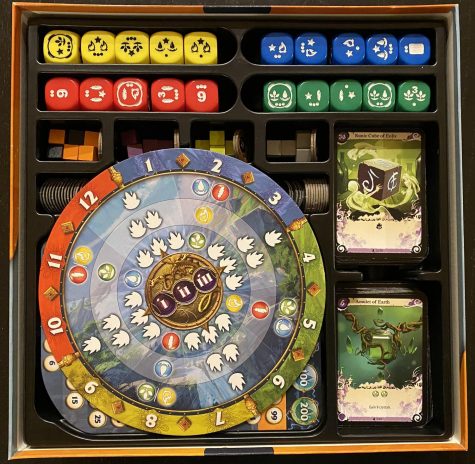
Overall, Seasons provides a phenomenal game experience because of the drafting mechanism and large number of cards provide high replayability. I also appreciate the game for its clean design regarding the season dice.
The last thing I’ll mention is the components and artwork. The artwork is gorgeous on the cards and boards, but the style is not consistent among all the cards. All the components are great, but that I wish that they made cylinder markers instead of cubes for the circular spaces and included a first player marker to pass around.
Seasons is a great game that I will pull out with three or four players that enjoy building card combinations. If you like finding card combinations, Seasons is a must-have. If you are more interested in transmuting the energy tokens for crystals, you might be better off checking out a set collection game instead; the majority of Seasons is about the card play. Those are my final thoughts about Seasons, and for those reasons, I will be giving the game high remarks at an 8 out of 10.

